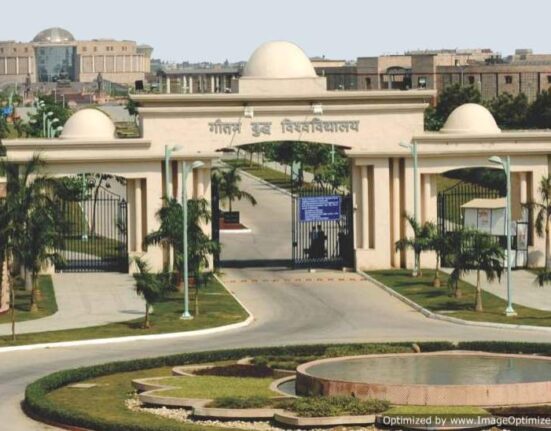Introduction
In this extensive article, we will embark on an in-depth exploration of the evolution and hierarchy of courts in India. By delving into the historical development of the Indian judicial system, we will gain valuable insights into its current structure. We will closely examine the three major phases of India’s legal system. These phases will be divided into the Hindu regime, the Muslim period, and the British rule. Through a thorough investigation of the ancient period, Vedic period, Mughal period, and the British Raj, we will obtain a profound understanding of the progression of courts in India.
Ancient Period
During the ancient period in India, the judicial system operated hierarchically. The fundamental unit of this system was the Panchayat, a local court that existed in every village. Panchayats were responsible for resolving disputes and dispensing justice at the grassroots level. As we ascend the hierarchy, we encounter town or district courts, which held jurisdiction over larger regions. At the pinnacle of the judicial pyramid, the king’s court located in the state capital, was the apex court of the land.
Vedic Period
The Vedic period marked a significant milestone in the administration of justice in India. Kautilya’s seminal work, Arthashastra, provides a comprehensive account of the court hierarchy during this era. According to Arthashastra, the courts were organized as follows:
- Sanghrava: Responsible for overseeing ten villages.
- Dro Namukha: Possessed jurisdiction over four hundred villages.
- Sthaniya: Exercised authority over eight hundred villages.
- King’s Court: Served as the highest court at the state level.
Mughal Period and Judicial System
During the Mughal period, the Indian judicial system underwent a transformation. Henceforth, under the influence of religious and cultural practices prevailing among various communities. Designated agents interpreted and administered the personal laws of each community. Muslims had Kazis, who applied Quranic injunctions to their rulings. Whereas, Hindus had Pundits, who dispensed justice based on Hindu legal principles. The headman of the village, along with his subordinate watchmen, played a pivotal role in maintaining law and order.
Britisher’s Rule and Judicial System
Under the British East India Company’s rule, the Indian judicial system underwent significant reforms. As the East India Company expanded its control, it established territorial units known as mofussils. This reformation gave birth to several courts and adalats, including:
- Mofussil Diwani Adalat: Established in each district, presided over by the collector. This court primarily dealt with civil cases.
- Small Cause Adalat: This specialized court heard cases involving amounts up to Rs. 10.
- Mofussil Nizamat or Fojdari Adalat: Responsible for trying criminal cases within the mofussil regions.
- Sadar Adalats: These superior courts, located in Calcutta, operated as the highest appellate authority.
Hierarchy of Courts in Modern India
In contemporary India, the courts and justice system are categorized into three levels:
- The Supreme Court
- High Courts
- District Courts.
Supreme Court
The Supreme Court of India, established on January 28, 1950, is the highest judicial body in the country. Over the years, it has evolved into a pillar of justice, protecting the constitutional rights of Indian citizens and ensuring the rule of law.
Initially, the Supreme Court consisted of a Chief Justice and 7 other judges. However, due to the increasing workload and the need for a larger bench, the number of judges has gradually expanded. Currently, the Supreme Court comprises the Chief Justice of India and 33 other judges, appointed by the President of India.
Constitutional Provision related to Supreme Court
Constitutional provisions regulate the appointment of judges to the Supreme Court. Article 124 of the Indian Constitution lays down the eligibility criteria for judges. To be considered for a position in the Supreme Court, an individual must be a citizen of India. Furthermore, they must possess a minimum of 5 years of experience as a judge in a High Court or have been recognized as a distinguished jurist in the eyes of the legal community. These requirements ensure that individuals appointed to the Supreme Court possess the necessary expertise, experience, and understanding of the law.
Once appointed, judges of the Supreme Court hold office until the age of sixty-five, as per Article 124(2) of the Indian Constitution. This ensures a level of stability and continuity within the judiciary. Moreover, allowing judges to develop expertise and provide consistent interpretation of the law over an extended period.
The role of the Supreme Court extends beyond mere adjudication. It plays a crucial role in interpreting the Constitution and safeguarding fundamental rights. Through its power of judicial review, the Supreme Court has the authority to strike down laws that are Unconstitutional. This power serves as a vital check on the legislative and executive branches of government, ensuring that they do not violate the constitutional rights of citizens.
Over the years, the Supreme Court has delivered landmark judgments that have shaped the legal landscape of the country. It has tackled diverse issues ranging from civil liberties and human rights to social justice and environmental protection. Through its judgments, the Supreme Court has strived to uphold the principles of justice, equality, and fairness.
High Courts
High Courts serve as the highest courts within their respective states. These courts have the authority to impose punishments for contempt of court and are recognized as courts of record. Judges of High Courts can serve until the age of sixty-two. The President of India appoints these judges after consulting the Chief Justice of India, the Chief Justice of the respective High Court, and the Governor of the state. The President determines the number of judges in a High Court according to the requirements. To qualify for a position in the High Court, an individual must be a citizen of India. Also, have at least ten years of experience in the judicial office.
The High Courts in India are the intermediate appellate courts that function within the state and union territory jurisdictions. Each state has its own High Court, while some union territories share a common High Court. These courts serve as crucial pillars of the judicial system, playing a significant role in the administration of justice.
Composition, Eligibility, and Jurisdiction
The composition of a High Court typically includes a Chief Justice and several other judges, the exact number of which varies from state to state. The President of India appoints the Chief Justice of a High Court in consultation with the Chief Justice of India and the Governor of the respective state. The appointment of other judges in the High Court is usually done by the President upon the recommendation of the Chief Justice of the High Court.
To be eligible for a position in a High Court, an individual must be a citizen of India and possess a minimum of 10 years of experience as an advocate or have served as a judicial officer in the state for a specific period. This ensures that the judges appointed to the High Court have a strong foundation in legal practice and possess the requisite knowledge and experience to adjudicate cases effectively.
The jurisdiction of the High Court includes both appellate and original jurisdiction. In its appellate capacity, the High Court hears appeals from lower courts and tribunals within its jurisdiction. As for its original jurisdiction, the High Court has the authority to hear certain types of cases directly, such as constitutional matters, disputes between the state and the central government, and cases involving significant public interest.
High Courts have the authority to interpret state laws, safeguard fundamental rights, and uphold the principles of justice and equity. They play a vital role in maintaining harmony, fairness, and the rule of law within their respective jurisdictions. The judgments delivered by High Courts contribute to the development of legal principles and precedents, shaping the legal landscape of the state.
District Courts
District Courts in India operate at the district level and fall under the administrative and judicial control of the respective High Courts. The highest court within a district is the District and Sessions Judge. This court holds primary jurisdiction for civil cases within the district and also functions as a court of sessions, presiding over cases that carry penalties including imprisonment and capital punishment. Several other courts, such as Civil Judge (Junior Division) and Judicial Magistrates, operate under the supervision of the District and Sessions Judge.
At the grassroots level of the judicial system in India, we have District Courts, also known as trial courts. These courts are located in various districts across the country and are responsible for adjudicating civil and criminal cases within their territorial jurisdiction.
Bifurcation in District Court
A District Court is presided over by a District Judge, who is appointed by the Governor of the respective state in consultation with the High Court. Additional District Judges and Assistant District Judges, who are also appointed by the Governor, assist the District Judge in handling the workload of the court.
Typically, judicial officers who have gained considerable experience in subordinate courts are selected to become District Judges. They possess a thorough understanding of legal procedures and substantive laws, allowing them to preside over trials and make sound judgments.
District Courts have original jurisdiction in civil matters where the value of the dispute falls within a specified monetary limit. They also have jurisdiction over criminal cases, except for those that fall under the exclusive jurisdiction of other specialized courts or tribunals. District Courts play a crucial role in delivering justice to the common people, resolving disputes, and ensuring fair trials.
District Courts are the foundation of the judicial system, serving as the first point of contact for litigants seeking justice. They handle a wide range of cases, including civil disputes, property matters, family disputes, and criminal offenses. Depending on the nature and value of the case, higher courts such as the High Court and Supreme Court can hear appeals for District Court judgments.
Conclusion
The evolution of courts in India spans centuries and reflects the influence of diverse ruling powers. From the ancient period to the Mughal era and the British Raj, the judicial system has transformed into its current form. Present-day India boasts a three-tiered court system, encompassing the Supreme Court, High Courts, and District Courts. Familiarity with this hierarchical structure is essential for navigating the Indian legal landscape and comprehending the administration of justice in the country.
Armed with a comprehensive understanding of the evolution and hierarchy of courts in India, you are now equipped to navigate the intricate legal framework of the nation with greater confidence and insight.
![]()







Leave feedback about this